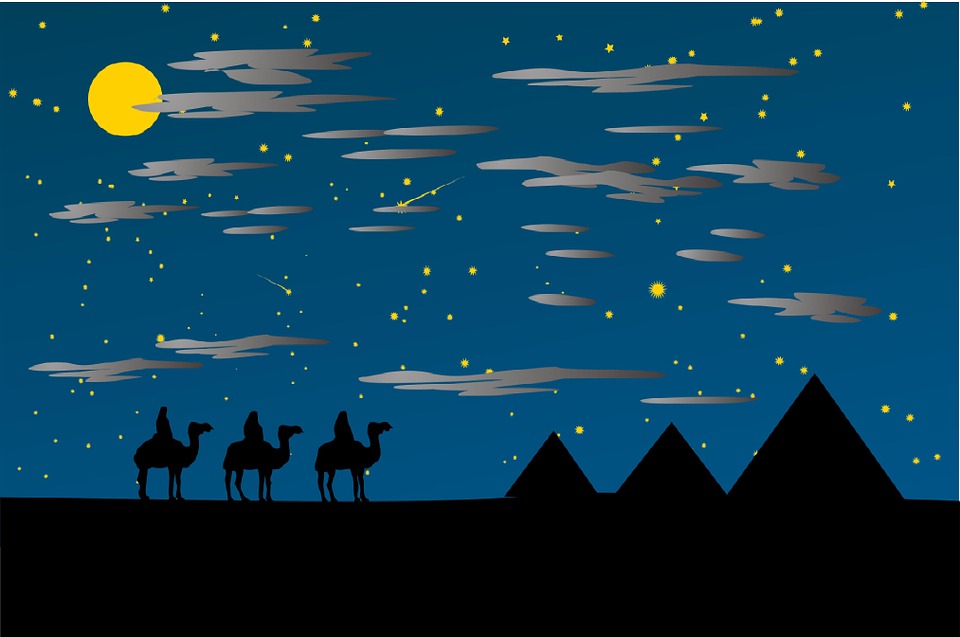[column width=”1/1″ last=”true” title=”” title_type=”single” animation=”none” implicit=”true”]
We Three Kings?
The story of the Magi is filled with images of the “three kings” riding camels in robes and crowns, carrying chests of gold, etc. Typically this event is celebrated on Epiphany, on January 6 the last of the 12 days of Christmas. Of all of the events surrounding the birth of Jesus, this one is often thought (at best) to be an invention of Matthew to show parallels between Jesus and Moses, or the “stuff of legends” at the worst.
The carol “We Three Kings” was written by an Episcopal deacon named John Henry Hopkins, Jr., in 1857 it was not published until 1863. It was originally intended for a Christmas Pageant at General Theological Seminary in New York City. This song is likely the reason every Christmas scene has three kings dressed like Persian royalty (usually one black and one Asian).

More perplexing is “I Saw Three Ships,” a song which dates to the 17th century. There is no way for three ships to come sailing into Bethlehem, so it is usually explained that the Wise Men on Camels are the ships. It is possible, however, that the ships refer to three ships bring the relics of the Magi to Cologne Cathedral in the 12th century. According to church tradition dating back to the fourth century the names of the three magi were Caspar, Melchior and Balthasar, although this varies in eastern forms of Christianity (Casper becomes Gaspar or Jasper, master of horses, for example).
The arrival of the Wise Men is celebrated by some Christians on January 5 or 6, in association with Epiphany, the day Jesus was revealed. For example, until recently, in Spain children receive their gifts from “Reyes Magos” rather than Santa Claus. In Puerto Rico and the Dominican Republic children put it a box of greenery (representing grass) under their bed on January 5 for the camels of the wise men.
Who were the three Wise Men in Matthew 2? They were not kings, although the song “we three kings” has kept that interpretation alive. The idea that they were kings comes from the fact that they bring gifts (i.e., tribute) to Jesus. Craig Blomberg, for example, says “The gifts used to honor the new king were typically associated with royalty” (Matthew, 65). Magicians and astrologers often were important advisors to kings. If they were not political advisors, they were certainly the educated, scientific class of the ancient world.
A Magus was an astrologer, although not in the modern sense of the word. They did in fact tell fortunes by the stars, but there were more or less the astronomers of the ancient world. The same word is applied to advisors of king Nebuchadnezzar, in the KJV this is also translated as wise men, although they are court magicians or astrologers. As odd as it seems, having an astrologer in the court who would read the signs and omens in the heavens was common in the Ancient world.
Where are the Wise Men From? We are simply told “from the east,” likely following the spice route from as far away as Persia. The word Magus has a Persian origin, although they may have been from only as far away as Nabatea on the east of the Jordan.
It is likely “from the east” refers to Babylon, and that the magi themselves were Jewish astrologers who had determined that the time for the birth of the messiah was at hand. There was a lively Jewish community in Babylon from the time of the exile, and it is not unlikely that Jewish men were still functioning in local governments.
A potential problem with this identification is that they do not know where the Messiah was to be born, something which Herod’s own wise men knew. It would seem odd that educated Jewish men would not know this somewhat obvious prophecy.
[/column]

